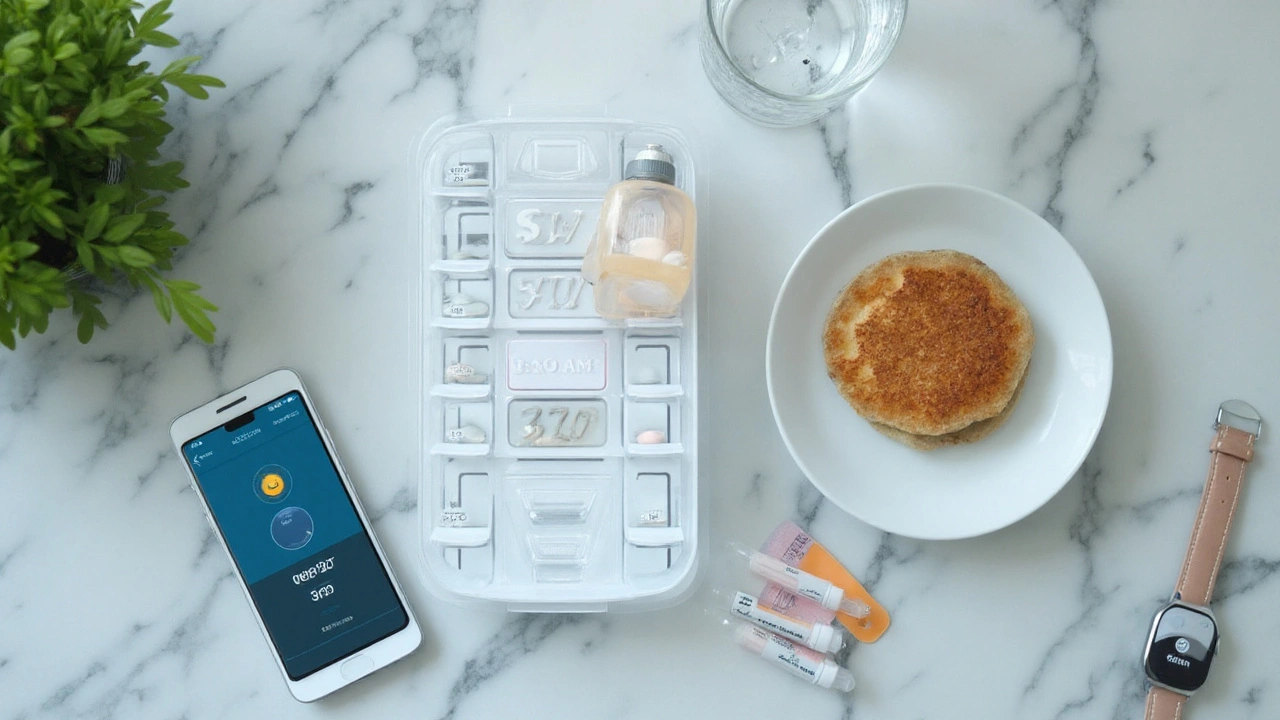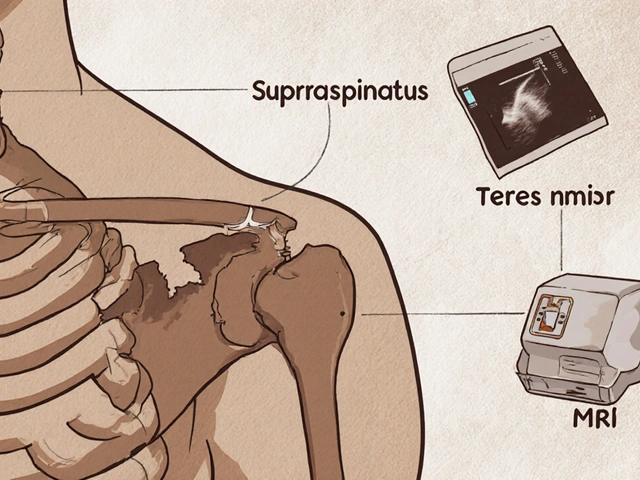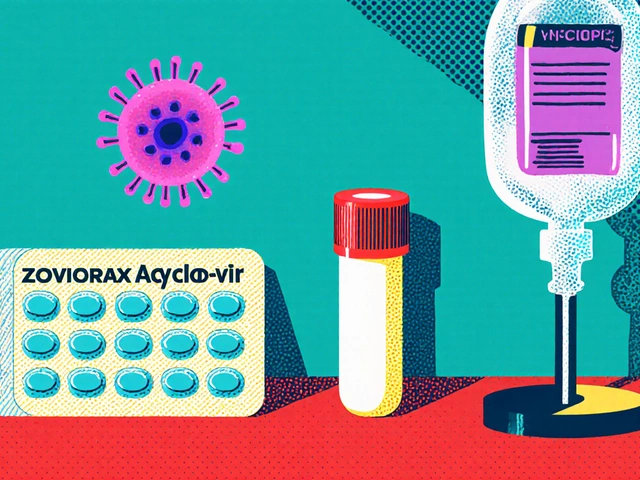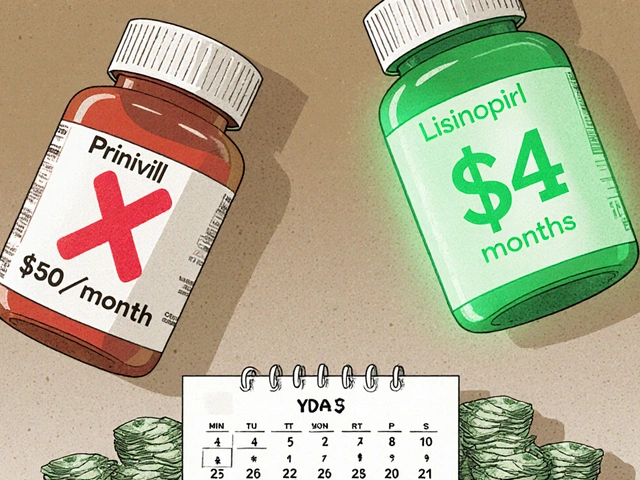One medicine can stop seizures, steady raging mania, and prevent migraines-yet carry some of the most serious pregnancy warnings in modern medicine. This guide explains what valproic acid is, how to use it safely, and the traps to avoid so you can get the benefit without blind spots.
- TL;DR: Valproate (valproic acid/sodium valproate/divalproex) treats epilepsy, acute mania, and sometimes migraine prevention. It needs blood tests and careful dose titration.
- Big risk: Major birth defects (~10%) and developmental problems (up to 30-40%) with exposure in pregnancy. Use effective contraception and a formal pregnancy-prevention plan if you could become pregnant.
- How to use: Start low, go slow; check liver enzymes, platelets, and drug levels; watch for tremor, weight gain, hair loss, and red-flag symptoms like severe belly pain or confusion.
- Interactions matter: Carbapenem antibiotics can crash levels; valproate boosts lamotrigine and can raise bleeding risk with warfarin/aspirin; topiramate may trigger high ammonia.
- When to avoid: Significant liver disease, urea-cycle disorders/POLG variants, active pancreatitis, or pregnancy (unless no alternative and strict specialist oversight).
What It Is and When It’s Used
Valproate is a family of medicines that includes valproic acid, divalproex sodium, and sodium valproate. Different names, same active effect. In Australia you’ll often see Epilim (sodium valproate) and modified-release versions for once-daily dosing. In the U.S., Depakote (divalproex) is the common brand. Pharmacologically, they increase brain GABA activity and stabilize firing in neurons.
What it treats well:
- Epilepsy: Broad-spectrum. Useful for generalized seizures (absence, myoclonic, tonic-clonic) and focal seizures. It’s often chosen when seizure types are mixed or unclear.
- Bipolar disorder: Strong for acute mania and mixed episodes. Maintenance use depends on your history and side-effect tolerance.
- Migraine prevention: Effective in adults but not first-line for many, and generally avoided in those who could become pregnant.
Who this guide is for: people starting valproate, caregivers, and clinicians who want a practical, safety-first refresher. The jobs most readers want to get done are simple: know if it’s right for them, start it safely, monitor correctly, catch problems early, and handle special situations like pregnancy, surgery, or switching from other meds.
When it’s not the right pick:
- Planning a pregnancy or not using reliable contraception. Regulators (TGA in Australia, EMA in Europe, FDA in the U.S.) warn against use in pregnancy because of the high risk of birth defects and developmental problems.
- Liver disease or a history of serious liver reactions to valproate.
- Known mitochondrial disorders involving POLG (like Alpers-Huttenlocher syndrome) or urea-cycle disorders.
- Current or past pancreatitis caused by valproate.
Evidence at a glance: The NEAD cohort (NEJM, 2009) found lower cognitive outcomes in children exposed to high-dose valproate during pregnancy. EMA safety reviews (2014-2018) and TGA programs require a pregnancy prevention plan for people who could become pregnant. FDA boxed warnings flag liver failure, pancreatitis, and teratogenicity. These are not subtle risks.

Safe Use: Dosing, Tests, Interactions, Red Flags
Start low, titrate steadily, and track lab results. That rhythm keeps most people safe and comfortable.
Core dosing rules of thumb (adults):
- Epilepsy: 10-15 mg/kg/day in divided doses, increasing by 5-10 mg/kg/day at weekly intervals; max 60 mg/kg/day.
- Acute mania: 15-20 mg/kg/day; many aim for serum levels 80-100 mcg/mL (some go to 125 mcg/mL short term).
- Migraine prevention: 500-1,000 mg/day (country-specific indications vary).
Practical starting plans:
- If you prefer twice daily: Start 250 mg at night for 2-3 days, then 250 mg twice daily; increase by 250-500 mg every 3-7 days based on symptoms and side effects.
- If once daily suits you: Use a modified/extended-release (MR/ER) product-often 500 mg nightly, then increase by 250-500 mg every few days. ER tablets are easier on the stomach and steadier for mood.
- Weight-based approach: For a 70 kg adult with mania, 1,000-1,500 mg/day total is common to start, then refine using response and serum levels.
Helpful nuance:
- ER vs non-ER switching: ER may need ~8-20% higher total daily dose to achieve the same exposure.
- Take with food if you get nausea. Do not crush modified-release tablets.
- Missed a dose? If it’s within ~6 hours, take it. If it’s close to the next one, skip and resume your schedule. Don’t double up.
Blood tests and monitoring (what, when, why):
- Before starting: Liver function tests (ALT/AST, bilirubin), full blood count with platelets, weight/BMI, pregnancy test if relevant, and a medication review for interactions.
- Early phase (first 3 months): LFTs and platelets at 2-4 weeks and 3 months; check a trough drug level about 3-5 days after you reach a stable dose; earlier if breakthrough seizures, side effects, or interactions appear.
- Ongoing: LFTs and platelets every 6-12 months; drug levels when dosing changes, adding interacting meds, or symptoms suggest toxicity or underdosing.
Interpreting drug levels:
- Epilepsy: many aim for 50-100 mcg/mL (total). Mania: often 80-100 mcg/mL; up to 125 mcg/mL short term in some protocols.
- Free level (if low albumin, elderly, critical illness): target ~5-15 mcg/mL. Free levels explain toxicity even when total looks “normal.”
Common side effects and tips:
- Nausea, stomach upset: Take with food or switch to ER tablets.
- Tremor: Often dose-related; cut caffeine, consider a small dose reduction, or ask about propranolol if needed.
- Weight gain (seen in 5-20%): Track weight weekly at the start. Early diet and activity changes matter. If weight climbs >5% in a few months, discuss alternatives.
- Hair thinning: Typically reversible; biotin or zinc can help some people; check thyroid and iron if shedding is heavy.
- Drowsiness: Usually eases after a couple of weeks or with ER formulations taken at night.
Serious but uncommon risks (seek urgent care):
- Severe abdominal pain, vomiting: could be pancreatitis.
- Confusion, excessive sleepiness, vomiting: could be hyperammonemia or overdose.
- Yellow skin/eyes, dark urine, severe fatigue: liver injury.
- Easy bruising/bleeding: low platelets.
Interactions you should know about:
- Lamotrigine: Valproate slows its breakdown, raising lamotrigine levels and rash risk. Use lower lamotrigine starting doses.
- Carbapenem antibiotics (meropenem, ertapenem): Can slash valproate levels and trigger seizures. Flag this to any hospital team.
- Topiramate: Raises the risk of high ammonia and encephalopathy. Watch closely if used together.
- Warfarin/aspirin: Valproate can displace protein binding and affect platelets, increasing bleeding risk. Check INR and watch for bruising.
- Enzyme inducers (carbamazepine, phenytoin, rifampin, St. John’s wort): Can lower valproate levels; doses may need adjusting and levels checked.
- Alcohol: Adds sedation and fall risk; keep it minimal or skip it.
Pregnancy, contraception, and breastfeeding:
- Pregnancy risk: Congenital malformations around 10% and neurodevelopmental disorders up to 30-40% with in‑utero exposure, with dose as a key driver. These figures underpin strict regulator warnings (TGA/FDA/EMA).
- Contraception: Use reliable contraception. Many countries require a signed risk acknowledgment yearly (Pregnancy Prevention Program). Consider long-acting reversible contraception if suitable.
- Trying to conceive: Talk to your specialist months in advance. High-dose folic acid (e.g., 5 mg daily) before conception is standard, but it does not remove neurodevelopmental risks.
- Breastfeeding: Breast milk levels are low; major bodies (e.g., American Academy of Pediatrics, WHO) consider valproate usually compatible with breastfeeding. Watch the baby for jaundice, poor feeding, or bruising.
Who needs extra caution:
- Kids under two years, especially on multiple anti-seizure medicines.
- Older adults or those with low albumin-monitor free levels and watch for sedation.
- People with liver disease, mitochondrial disorders, or prior pancreatitis-often avoid entirely.
Emergency and overdose basics: If someone takes too much and becomes very drowsy, confused, or vomits, seek urgent medical care or contact your local poisons centre. In hospital, teams may check ammonia, consider L‑carnitine in severe metabolic toxicity, and support breathing and blood pressure.
| Topic | Key Facts | Useful Numbers/Targets | Notes/Source |
|---|---|---|---|
| Indications | Epilepsy (broad-spectrum), acute mania, migraine prevention (selected adults) | - | Guidelines: AAN/AES, NICE |
| Adult dosing | Epilepsy 10-15 mg/kg/day; Mania 15-20 mg/kg/day | Max 60 mg/kg/day | Product info (TGA/FDA) |
| Therapeutic level | Total serum trough | 50-100 mcg/mL (epilepsy); up to 125 mcg/mL (mania) | Lab practice standards |
| Free level | Use if low albumin/elderly | ~5-15 mcg/mL | Pharmacokinetic texts |
| Serious risks | Hepatic failure, pancreatitis, teratogenicity, hyperammonemia | - | Boxed warnings (FDA); EMA/TGA safety notices |
| Common adverse effects | Nausea, tremor, weight gain, hair loss, sedation | Weight gain 5-20% | Cochrane reviews, product info |
| Interactions | Lamotrigine↑, carbapenems↓VPA, topiramate↑ammonia, warfarin/aspirin bleeding | - | Drug-drug interaction compendia |
| Pregnancy risk | Major malformations, neurodevelopmental disorders | ~10% defects; 30-40% developmental | NEAD (NEJM 2009); EMA/TGA PPP |
| Monitoring | LFTs, platelets, drug level | Baseline; 2-4 wks; 3 mos; then 6-12 mos | Specialist consensus |

Tools: Checklists, Comparisons, FAQs, Next Steps
Use these to make decisions fast and keep yourself safe.
Before you start (checklist):
- Confirm indication and alternatives have been discussed (especially if pregnancy is possible).
- Baseline tests: LFTs, platelets, pregnancy test if relevant, weight/BMI.
- Medication review for interactions (antibiotics, anticoagulants, other anti-seizure meds, supplements).
- Choose formulation (ER vs non-ER) and agree on a simple titration plan.
- Set monitoring dates and a plan for missed doses and side effects.
The first 12 weeks (what good looks like):
- Symptoms improve (fewer seizures or steadier mood) without disabling side effects.
- LFTs/platelets stay within safe limits or minor, stable changes.
- Weight stable within a few kilos; nausea manageable; tremor mild or absent.
- A trough level in the target range once the dose is stable.
When to call your clinician now:
- New severe belly pain or persistent vomiting.
- Deep fatigue with yellowing skin/eyes.
- Sudden confusion, slurred speech, or extreme sleepiness.
- Unusual bruising/bleeding or a rash with fever.
Simple decision aids:
- If you’re on lamotrigine → expect lower starting doses of lamotrigine when valproate is added, and slower titration to reduce rash risk.
- If you need a carbapenem antibiotic → your team may switch seizure meds temporarily because levels can crash.
- If albumin is low, elderly, or critically ill → ask for a free valproate level rather than relying on total.
- If weight is rising quickly → consider ER formulations, lifestyle support, or alternative mood stabilizers/ASMs.
Quick comparisons (very high level):
- Valproate vs levetiracetam (Keppra): Valproate often better for generalized epilepsies; levetiracetam has fewer interactions but can worsen mood in some.
- Valproate vs lamotrigine: Valproate is stronger for acute mania; lamotrigine is better for bipolar depression and gentler in pregnancy planning.
- Valproate vs lithium: Lithium is king for classic mania and suicide risk reduction; needs kidney/thyroid monitoring; different side-effect profile.
Mini‑FAQ
- How fast does it work? Mania can settle in days to a couple of weeks as levels rise. Seizure control may take weeks as doses are optimized.
- Can I drink alcohol? Small amounts may be okay, but alcohol adds sedation and fall risk. Many people feel better avoiding it during titration.
- Does it cause weight gain? Yes, in a minority. Track weekly early on and act quickly if your weight climbs.
- What about hair loss? It’s usually mild and reversible. Ask about dose tweaks, biotin, zinc, and checking thyroid/iron.
- Is breastfeeding okay? Usually yes with monitoring. Discuss with your paediatrician and watch the baby’s feeding, alertness, and bruising.
- Driving and seizures (Australia): Rules depend on your situation and state, but a seizure‑free period is normally required. Check the Austroads “Assessing Fitness to Drive” guidelines and confirm with your neurologist.
- Do oral contraceptives interact? Valproate does not reduce pill effectiveness (unlike enzyme‑inducing ASMs). The issue is pregnancy risk if contraception fails.
- Can I stop suddenly? Don’t-unless there’s a life‑threatening reaction. Taper over weeks to avoid seizure rebound or mood relapse.
- Do generics work the same? Yes, within bioequivalence ranges. Stick to one brand if possible; if you switch, recheck levels and watch symptoms.
- What if my liver tests rise? Mild increases can happen. If ALT/AST jump to about three times the upper limit or you feel unwell, your clinician may cut the dose or stop.
Pro tips to make life easier:
- Use a weekly pill organizer and phone reminders. Trough lab draws work best in the morning before your dose.
- Traveling? Carry medicine in original packaging and a copy of your prescription. Time-zone changes: shift dose by 1-2 hours a day until you’re back on schedule.
- If surgery is planned, tell the anaesthetist you’re on valproate. They’ll plan for bleeding risk and interactions.
- Keep a simple diary: dose, side effects, seizures/mood. Patterns jump out quickly and help with dose decisions.
Next steps / troubleshooting by situation:
- Newly diagnosed with generalized epilepsy: Start ER valproate at night, titrate every 3-7 days, check a level after steady dose, log seizures, and review in 2-4 weeks.
- Acute mania in the ED/ward: Weight-based loading (specialist-led), aim for serum 80-100 mcg/mL; combine with an antipsychotic for faster relief if needed.
- Woman who could become pregnant: Discuss alternatives first (e.g., lamotrigine, levetiracetam, lithium depending on condition). If valproate is the only effective option, use a signed pregnancy prevention plan, reliable contraception, and regular reviews.
- Older adult with low albumin or many meds: Start very low, go slow, and consider checking a free level. Watch for sedation and falls.
- Child on multiple anti-seizure medicines: Specialist care only. Very cautious titration and close lab monitoring.
- Suspected toxicity (drowsy, confused, vomiting): Get urgent care. Ask for ammonia, LFTs, platelets, and a drug level. Mention topiramate or carbapenem use if relevant.
Where these rules come from: FDA boxed warnings and product information; EMA PRAC safety recommendations; Australia’s TGA Pregnancy Prevention Program; NEAD cohort data (NEJM 2009) on neurodevelopment; seizure and bipolar guidelines from AAN/AES and NICE; and pharmacology texts on therapeutic levels and free vs total monitoring.
If you remember only three things: use contraception if pregnancy is possible, plan your titration and blood tests, and treat new severe abdominal pain or sudden confusion as an emergency.






Brian O
September 6, 2025 AT 03:41Just started my niece on valproate for absence seizures - her neurologist was super careful about the dosing. We’ve been doing weekly weight checks and keeping a little journal on side effects. Hair thinning was scary at first, but it leveled off after 2 months. She’s now seizure-free and even back in choir. Big props to the ER formulation - no more nausea at breakfast.
Also, her mom switched to an IUD after the pregnancy risk talk. Honestly, that part of the guide saved us from a nightmare.
TL;DR: It’s not perfect, but when it works? It’s a game-changer.
Steve Harvey
September 7, 2025 AT 11:26They’re hiding the truth. Valproate was designed by Big Pharma to control the masses. Look at the side effects - weight gain, hair loss, tremors - it’s a slow chemical lobotomy. And don’t get me started on the ‘pregnancy prevention plan.’ They don’t care if you get pregnant. They just want you on it forever so you keep buying.
My cousin’s kid got autism after she took it. No one talks about that. The FDA? A puppet. The NEAD study? Paid for by the same people who profit from the drug.
Free your mind. Ask why lithium is cheaper and safer. Why isn’t that the first-line? Coincidence? I think not.
Gary Katzen
September 8, 2025 AT 23:45Thanks for putting this together. I’ve been on valproate for 8 years for bipolar, and honestly, I didn’t realize how much the free level matters until my albumin dropped last year. My total was ‘normal’ but I was foggy as hell. Once they checked the free level and lowered my dose, I felt like myself again.
Also, the carbapenem warning? My ER doc didn’t know. I had to remind them. Please, if you’re on this med, carry a card. Or at least tell every new provider. It’s not just about seizures - it’s about survival.
ryan smart
September 9, 2025 AT 07:56Why the hell are we letting foreigners tell us how to treat our own people? This whole guide sounds like it was written by some EU bureaucrat who’s never met a real patient. We got better meds here. Why are we listening to TGA and EMA? We don’t need their rules.
Also, if you’re a woman and you get pregnant? That’s your fault. Don’t blame the drug. Take responsibility. Stop being weak.
Sanjoy Chanda
September 10, 2025 AT 23:54I’m a nurse in Delhi, and we use valproate a lot here because it’s cheap and works. But we don’t have easy access to labs like you do in the US. So we rely on clinical signs - tremor, drowsiness, appetite changes. If a kid starts vomiting and acting weird? We stop it immediately.
One thing I wish more doctors knew: hair loss isn’t just cosmetic. For young girls in conservative families, it can mean they’re pulled out of school. We try to start low, use ER forms, and give them biotin. Small things matter.
Also, breastfeeding? We’ve seen babies do fine. Just watch for jaundice. No need to panic.
Sufiyan Ansari
September 12, 2025 AT 05:58The use of valproic acid presents a profound ontological dilemma: a molecule that stabilizes the chaotic firing of neurons, yet simultaneously disrupts the delicate architecture of embryonic neurogenesis. One may ask: is the preservation of cognitive order worth the sacrifice of potential consciousness?
The ancient Vedic texts speak of the mind as a vessel - valproate, in its duality, both purifies and pollutes this vessel. In the West, we quantify risk with percentages; in the East, we weigh karma. A child born with developmental delay - is it the fault of the drug, or the failure of society to offer alternatives?
Perhaps the true therapy lies not in the pharmacology, but in the compassion with which we hold space for those who suffer - both mother and child.
With humility, I submit this reflection.
megha rathore
September 12, 2025 AT 08:24OMG I JUST FOUND OUT MY BEST FRIEND’S KID HAS AUTISM AND SHE WAS ON VALPROATE 😭😭😭
She didn’t even know the risks! She thought it was just for seizures. Now she’s blaming herself and her husband won’t talk to her. I’m so mad at the doctors. Why didn’t they TELL her? Like, REALLY? This is why I don’t trust the medical system anymore. 💔
Also, I’m pregnant and I’m on lamotrigine now. THANK GOD I read this. I’m telling everyone. This is a TRAP.
prem sonkar
September 12, 2025 AT 14:32wait so valproate can cause hair loss? i thought it was just stress 😅
also i took it for a month for migraines and my brain felt like mush. i stopped. no one told me to check levels. i just felt bad and quit.
why do they make it so hard to find info? i had to google for 3 hours to find this post. why not just say ‘this might make you fat and dumb’ in the pamphlet??
also can you take it with protein shakes? i heard that helps with weight gain. idk.
Michal Clouser
September 13, 2025 AT 19:43This is one of the most thoughtful, well-structured medical guides I’ve ever read. Thank you for the clarity on free levels - I’ve been practicing for 12 years and I still forget to check them in elderly patients with low albumin.
Also, the checklist at the end? Print it. Laminate it. Put it on your fridge. This isn’t just for clinicians - patients deserve to understand what they’re signing up for.
One typo: ‘Trough lab draws work best in the morning before your dose’ - should be ‘draws’ not ‘draw’. But honestly? Minor. This is gold.
Earle Grimes61
September 15, 2025 AT 06:12Let’s talk about the real agenda: Valproate is being used as a behavioral control agent in institutional settings - prisons, nursing homes, psychiatric wards. The ‘seizure’ and ‘bipolar’ labels are just legal cover. The real purpose? Sedate the non-compliant. Look at the dosing - it’s often pushed to 125 mcg/mL in geriatric wards. That’s not therapy. That’s chemical restraint.
And the pregnancy warnings? A smokescreen. If they really cared, they’d ban it entirely. But they don’t. Why? Because the profit margins on valproate are astronomical. And the manufacturers? They own the guidelines.
Free levels? A distraction. The real issue is systemic dehumanization disguised as medicine.
Corine Wood
September 15, 2025 AT 10:36I’ve been a psychiatric nurse for 15 years. I’ve seen valproate save lives and ruin them. The key isn’t fear - it’s respect. Respect for the patient’s autonomy, for their body, for their future.
I once had a 22-year-old woman who refused contraception because she believed she couldn’t get pregnant. We spent three hours talking - not lecturing. She ended up switching to lamotrigine. She’s now a teacher. No kids. But she’s alive, stable, and happy.
Don’t treat patients like risks. Treat them like people. The science is clear. The humanity? That’s up to us.
BERNARD MOHR
September 15, 2025 AT 14:21Bro. I was on valproate for 5 years. It was like my brain got a soft reboot. No more rage attacks. But I gained 40 lbs and looked like a sad potato. 😅
Then I found out my cousin’s kid had autism after she took it. I almost quit. But my psychiatrist said, ‘We’re not gambling - we’re managing.’ So I kept it. And I’m still here.
Also, I started drinking green tea and walking 10k steps a day. Weight stabilized. Hair grew back. I didn’t need a miracle. Just discipline.
And yes - I carry a card in my wallet now. ‘Valproate user. Avoid carbapenems.’
Life’s messy. But we can still be smart about it. 🙏
Jake TSIS
September 16, 2025 AT 03:42Why is this even a thing? Just give people lithium. It’s cheaper, older, and doesn’t turn you into a blob. Also, if you’re a woman and you’re on this? You’re an idiot for not getting sterilized. Stop being so dramatic about pregnancy. Just don’t have kids if you’re on this crap.
And stop acting like it’s a mystery. It’s a poison. They just gave it a fancy name and a fancy label.
Akintokun David Akinyemi
September 17, 2025 AT 12:03In Nigeria, valproate is a lifeline - we don’t have access to newer ASMs. We use it for epilepsy in children, and yes, the side effects are real. But we’ve adapted: community health workers do monthly home visits, we use mobile apps to track seizures, and we teach families to recognize early signs of toxicity.
One mother in Lagos told me, ‘My son used to scream all night. Now he sleeps. I’ll carry the weight gain.’ That’s not compliance - that’s love.
Let’s not shame the global south for using what saves lives. We need more resources, not more judgment.
Jasmine Hwang
September 18, 2025 AT 16:59so like… i read this whole thing and i’m just confused. is it good or bad? like, should i take it or not? it’s like a medical thriller. who do i trust??
also i think the author is trying to scare people. ‘up to 40%’?? that’s not a number, that’s a horror movie tagline.
and why is there a table? who has time for tables??
also i’m 23 and i’m on this for migraines and i’m not pregnant so why do i care??
also i think the guy who wrote this is a robot. it’s too perfect. like, who writes like this??
Maeve Marley
September 19, 2025 AT 01:02I’ve been on valproate for 12 years. I was diagnosed with bipolar II at 19. I’ve been through lithium, lamotrigine, carbamazepine - nothing else gave me stability. Valproate did. Yes, I gained weight. Yes, I had tremors. But I kept my job. I raised two kids. I didn’t end up in the hospital.
The risk numbers? They’re scary. But they’re not destiny. I had two pregnancies while on it - both children are healthy, brilliant, and now teenagers. I had a pregnancy prevention plan. I had weekly check-ins. I didn’t just ‘hope for the best.’
This guide isn’t meant to frighten. It’s meant to empower. You don’t have to choose between safety and survival. You just have to be informed. And you’re not alone.
Also - yes, I still take it. And I’m not sorry.
James Gonzales-Meisler
September 20, 2025 AT 16:46The post contains several grammatical inconsistencies. For instance, ‘use effective contraception’ should be ‘use effective contraceptives’ for parallelism with ‘a formal pregnancy-prevention plan.’ Also, ‘carbapenem antibiotics can crash levels’ is colloquial to the point of unprofessionalism. The use of ‘TL;DR’ is inappropriate in a clinical context. While the information is largely accurate, the tone undermines its authority. A revised version should adhere to formal medical communication standards.
Navin Kumar Ramalingam
September 20, 2025 AT 22:17Valproate? Oh, the classic. I used it back in med school. Everyone knew it was the ‘nuclear option’ - works too well, side effects too messy. Like using a flamethrower to light a candle.
But honestly? Most patients don’t get the real story. They hear ‘it helps seizures’ and skip the part about 30% risk of developmental delay. Why? Because doctors are tired. Because the system is broken.
Also, ‘modified-release’ sounds fancy. It’s just a fancy pill. Don’t let marketing fool you.
Shawn Baumgartner
September 21, 2025 AT 04:16Let me just say this: anyone who prescribes valproate to a woman of childbearing age without a signed, notarized, legally binding pregnancy prevention contract is committing malpractice. This isn’t ‘risk.’ It’s negligence dressed up as medicine.
And the fact that we’re still using this drug in 2025? It’s a moral failure. The data has been out since 2009. We’ve had alternatives. We’ve had warnings. We’ve had lawsuits.
And yet - still prescribed. Still approved. Still profitable.
This isn’t science. It’s corruption.
Cassaundra Pettigrew
September 22, 2025 AT 06:22Valproate is basically the villain in every medical thriller. It’s got the hair loss, the weight gain, the brain fog - and it doesn’t even give you a cool nickname like ‘Lithium’ or ‘Seroquel.’ It’s just… Valproate. Like a boring spreadsheet of doom.
Also, I tried it for migraines. I got so fat I had to buy new jeans. My hair looked like a bird nest. I stopped. Now I take CBD oil. My mom says it’s ‘hippie medicine’ but at least I don’t look like a melted candle.
And yes - I’m 27. No kids. But if I ever do? I’m going to Google this post and scream.
Brian O
September 22, 2025 AT 10:04Just saw someone mention carbapenems - yeah, that’s real. My dad got meropenem for a UTI and had a seizure within 12 hours. ER didn’t know he was on valproate. They gave him the antibiotic anyway. He’s fine now, but it was terrifying.
Bottom line: if you’re on valproate, tell every doctor, every nurse, every EMT. Even if they don’t ask. Write it on your arm if you have to.